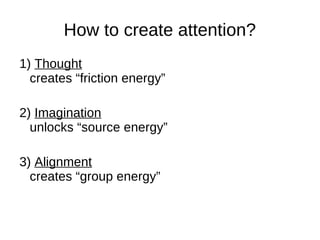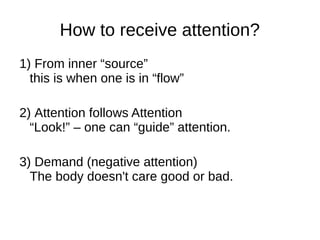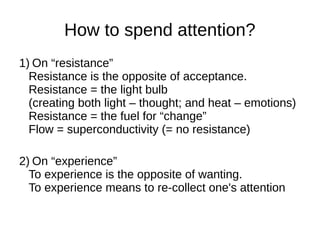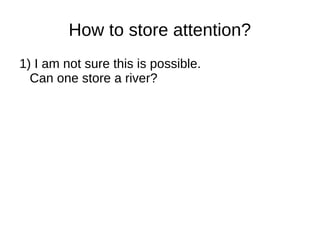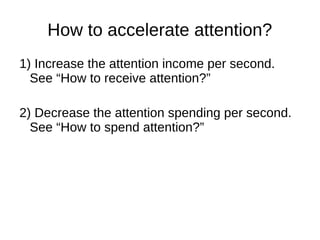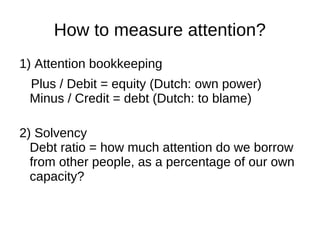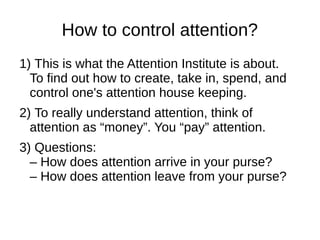Attention Institute Presentation
- 1. Attention Institute Everybody knows what attention is - William James (1890)
- 2. How to create attention? 1) Thought creates “friction energy” 2) Imagination unlocks “source energy” 3) Alignment creates “group energy”
- 3. How to receive attention? 1) From inner “source” this is when one is in “flow” 2) Attention follows Attention “Look!” – one can “guide” attention. 3) Demand (negative attention) The body doesn't care good or bad.
- 4. How to spend attention? 1) On “resistance” Resistance is the opposite of acceptance. Resistance = the light bulb (creating both light – thought; and heat – emotions) Resistance = the fuel for “change” Flow = superconductivity (= no resistance) 2) On “experience” To experience is the opposite of wanting. To experience means to re-collect one's attention
- 5. How to store attention? 1) I am not sure this is possible. Can one store a river?
- 6. How to dilute attention? This is about the quality of attention. 1) Importance Something that is “important” to me, creates a void which attracts attention. The thing becomes “charged” with attention. 2) Judgment An opinion is a “frozen” amount of attention. Like a muscle knot, it hurts. Questions are the massage to release them.
- 7. How to accelerate attention? 1) Increase the attention income per second. See “How to receive attention?” 2) Decrease the attention spending per second. See “How to spend attention?”
- 8. How to measure attention? 1) Attention bookkeeping Plus / Debit = equity (Dutch: own power) Minus / Credit = debt (Dutch: to blame) 2) Solvency Debt ratio = how much attention do we borrow from other people, as a percentage of our own capacity?
- 9. How to control attention? 1) This is what the Attention Institute is about. To find out how to create, take in, spend, and control one's attention house keeping. 2) To really understand attention, think of attention as “money”. You “pay” attention. 3) Questions: – How does attention arrive in your purse? – How does attention leave from your purse?


